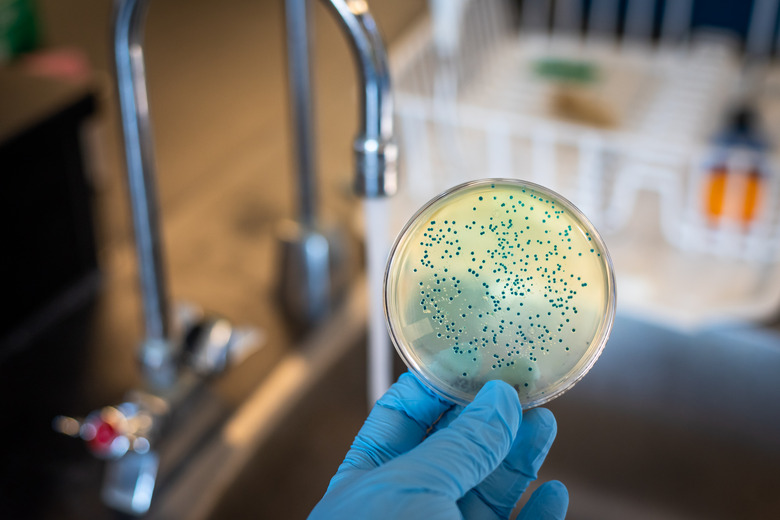What Types Of Bacteria Produce Endospores?
Very few bacteria produce endospores. Only some of those species in the Firmicute phylum produce endospores, which are non-reproductive structures containing DNA and a portion of the cytoplasm. Endospores are not true spores since they are not offspring of the bacterium. Endospores are formed when bacteria are subjected to extreme or adverse environmental conditions. They can survive for long periods even when starved of food and when exposed to chemicals and temperatures that would normally kill the bacteria.
Bacillus Bacteria
Bacillus Bacteria
Bacteria in the genus Bacillus are the most commonly studied of all endospore-producing bacteria. Bacillus bacteria are diverse and thrive in many different environments. The endospores of this bacteria are highly toxic to many organisms, including humans. The pathogen Bacillus anthracis is a well-known toxin that has been used by both scientists and terrorists. However, there are many other species of Bacillus.
Clostridium Bacteria
Clostridium Bacteria
Like other species of endospore-producing bacteria, Clostridium bacteria are gram-positive, indicating that they have similar characteristics such as cell wall structure. Gram-positive bacteria are sensitive to the same or closely related antibiotics. Bacteria in the genus Clostridium are responsible for a wide range of human diseases ranging from mild food poisoning to botulism as well as tetanus and gas gangrene.
Desulfotomaculum Bacteria
Desulfotomaculum Bacteria
Similar to other endospore-producing bacteria, bacteria in the genus Desulfotomaculum are also responsible for food spoilage and illness. Desulfotomaculum bacteria can cause poorly canned foods to spoil. Where they are in abundance, they produce an unpleasant sulphur-like smell.
References
Cite This Article
MLA
Lawrence, Antonia. "What Types Of Bacteria Produce Endospores?" sciencing.com, https://www.sciencing.com/what-types-of-bacteria-produce-endospores-13428157/. 22 November 2019.
APA
Lawrence, Antonia. (2019, November 22). What Types Of Bacteria Produce Endospores?. sciencing.com. Retrieved from https://www.sciencing.com/what-types-of-bacteria-produce-endospores-13428157/
Chicago
Lawrence, Antonia. What Types Of Bacteria Produce Endospores? last modified March 24, 2022. https://www.sciencing.com/what-types-of-bacteria-produce-endospores-13428157/
